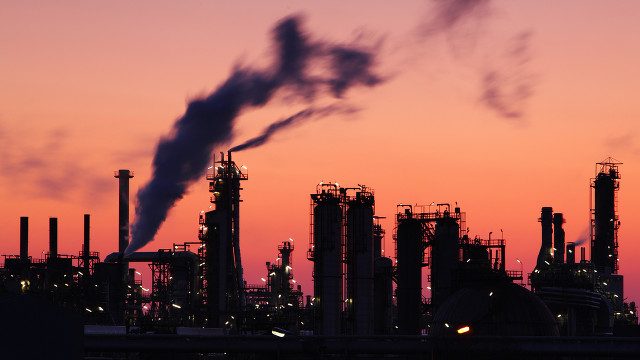SUMMARY
This is AI generated summarization, which may have errors. For context, always refer to the full article.

BONN, Germany (2nd UPDATE) – Inadequate national targets for curbing climate-altering greenhouse gases meant emissions would be “far above” the level required to stave off disastrous global warming, analysts warned Wednesday, September 2.
Instead of the UN-targeted ceiling of 2ºC (3.6ºF) of average warming over pre-Industrial Revolution levels, the world was on track for 2.9-3.1ºC by 2100, according to the Climate Action Tracker (CAT), a tool developed by a consortium of four research organizations.
“The climate targets so far submitted to the UN by governments collectively lead to global emissions far above the levels needed to hold warming to below 2ºC,” said a CAT statement.
So far, 56 governments have submitted pledges, known as Intended Nationally Determined Contributions or INDCs, to a UN roster that will form the backbone of a universal climate-rescue pact to be inked in Paris in December.
Including major emitters China, the United States and the 28-member European Union, the pledges cover some 65% of global emissions, and 43% of the world population.
To stay under the 2ºC threshold, which scientists say is necessary to avoid worst-case scenario global warming, greenhouse gas emissions would have to drop from about 50 billion tonnes of CO2 equivalent (GtCO2e) per year today, to 39-43 GtCO2e in 2025 and 36-45 GtCO2e in 2030, according to the CAT.
Goal ‘almost infeasible’
Containing warming to an even safer 1.5ºC would require emissions of 38 GtCO2e in 2025 and 32 GtCO2e in 2030. The world has already warmed up by 0.8ºC – nearly half the 2ºC target.
“The current INDCs lead to emissions levels that exceed the benchmark 2ºC limit by 12-15 GtCO2e in 2025, and 17-21 GtCO2e in 2030,” said the CAT statement.
The CAT based its projections on an assessment of 16 pledges representing 64.5% of global emissions in 2010, and 41% of Earth’s population.
Current targets for 2030 would make the 2ºC goal “almost infeasible”, it found.
The level would instead be closer to “2.9-3.1ºC by 2100,” Bill Hare of Climate Analytics, a CAT contributor, told Agence France-Presse.
The authors said the current level of ambition should not be locked into the long-awaited Paris agreement – the first that will commit all the world’s nations to slashing CO2 and other planet-harming greenhouse gases.
It was important that the pact, due to enter into force in 2020, included wording on narrowing the gap between what is needed and what has been promised, they warned, as diplomats met in Bonn for the penultimate round of official negotiations before the crucial November 30-December 11 Paris conference.
“It is clear that if the Paris meeting locks in present climate commitments for 2030, holding warming below 2ºC could essentially become infeasible, and 1.5ºC beyond reach,” said Hare.
‘Inadequate’ ratings
Of the 15 INDCs assessed, seven were rated “inadequate” – those of Australia, Canada, Japan, New Zealand, Singapore, South Korea and Russia.
Six were rated “medium” – those of China, the EU, Mexico, Norway, Switzerland and the United States.
Only two, those of Ethiopia and Morocco, were “sufficient” in line with the 2ºC goal.
The world’s 5 top carbon emitters, in descending order, are China, the United States, the European Union, India and Russia.
“Most governments that have already submitted an INDC need to review their targets in light of the global goal and, in most cases, will need to strengthen them,” said Niklas Hoehne of NewClimate Institute, another CAT contributor.
“Those still working on their targets need to ensure they aim as high as possible.”
The 10 highest emitters yet to submit INDCs are India, Brazil, Iran, Indonesia, Saudi Arabia, South Africa, Thailand, Turkey, Ukraine, and Pakistan, which together account for 18% of global emissions. – Mariette Le Roux, AFP / Rappler.com
(Image courtesy Shutterstock)
Add a comment
How does this make you feel?
There are no comments yet. Add your comment to start the conversation.